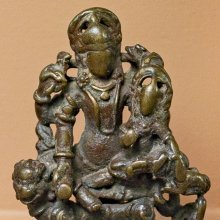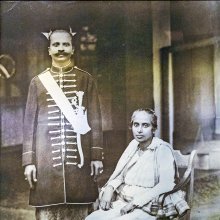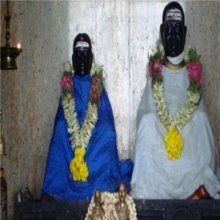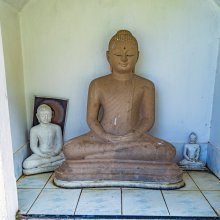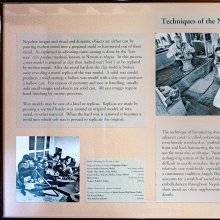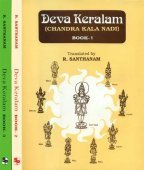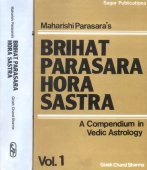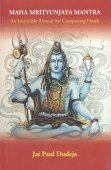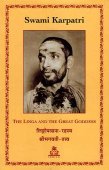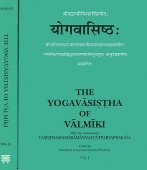Relative: 1 definition
Introduction:
Relative means something in the history of ancient India. If you want to know the exact meaning, history, etymology or English translation of this term then check out the descriptions on this page. Add your comment or reference to a book if you want to contribute to this summary article.
Images (photo gallery)
(+1 more images available)
India history and geography
Source: Singhi Jain Series: Ratnaprabha-suri’s Kuvalayamala-katha (history)Relatives were commonly depicted on the Saṃsāracakra paintings (representing scenes of human life), in ancient India, as mentioned in the Kathās (narrative poems) such as Uddyotanasūri in his 8th-century Kuvalayamālā (a Prakrit Campū, similar to Kāvya poetry).—Page 185.21 f.: Here follows a description of a printed scroll illustrating the Jaina conception of saṃsāracakra. [...] The saṃsāra-cakra illustrated the three worlds of hell, human world and the world of gods. [For example:] Visit of dear ones in condolences; all the dear ones and relatives going to the water tank and performing the obsequies.

The history of India traces the identification of countries, villages, towns and other regions of India, as well as mythology, zoology, royal dynasties, rulers, tribes, local festivities and traditions and regional languages. Ancient India enjoyed religious freedom and encourages the path of Dharma, a concept common to Buddhism, Hinduism, and Jainism.
See also (Relevant definitions)
Starts with: Relative Truth.
Full-text (+842): Sambandhin, Bandhu, Gurulaghava, Apekshika, Jnatibheda, Jnati, Bandhava, Sambandhu, Pratiyogika, Natidhamma, Natedara, Sapeksh, Bandhavajana, Aghaha, Anyonyabhava, Pakkuvani, Bhratri, Natedar, Janitra, Tatala.
Relevant text
Search found 383 books and stories containing Relative; (plurals include: Relatives). You can also click to the full overview containing English textual excerpts. Below are direct links for the most relevant articles:
The Tattvasangraha [with commentary] (by Ganganatha Jha)
Verse 859 < [Chapter 15 - Examination of Samavāya (‘subsistence’)]
Verse 930-931 < [Chapter 16 - Examination of the Import of Words]
Verse 857-858 < [Chapter 15 - Examination of Samavāya (‘subsistence’)]
Gautama Dharmasūtra (by Gautama)
Shrimad Bhagavad-gita (by Narayana Gosvami)
Verse 6.9 < [Chapter 6 - Dhyāna-yoga (Yoga through the Path of Meditation)]
Verse 2.11 < [Chapter 2 - Sāṅkhya-yoga (Yoga through distinguishing the Soul from the Body)]
Verse 1.27 < [Chapter 1 - Sainya-Darśana (Observing the Armies)]
The Bhikkhus Rules (by Bhikkhu Ariyesako)
How To Help A Bhikkhu < [Chapter 3 - Possessions And Offerings]
Offering Edibles < [Chapter 3 - Possessions And Offerings]
Begging For Food < [Chapter 3 - Possessions And Offerings]
The Great Chronicle of Buddhas (by Ven. Mingun Sayadaw)
Part 3 - The Buddha’s Delivery of The Tirokuṭṭa Sutta < [Chapter 15 - The buddha’s visit to Rājagaha]
Discourse on Rukkhadhamma Jātaka < [Chapter 22 - Founding of Vesali]
The Gilānadassana Sutta < [Chapter 45a - The Life Stories of Male Lay Disciples]
Related products
(+3 more products available)
